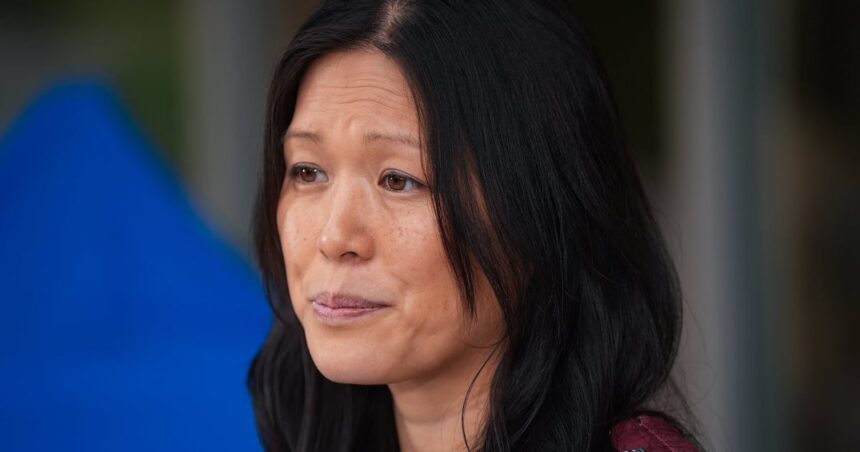Article – British Columbia Environment Minister Josie Osborne’s recent comments about receiving “just half a dozen death threats” have sparked fresh concern about the increasingly hostile climate facing Canadian politicians.
Speaking at a climate policy forum in Vancouver last week, Osborne reflected on what she described as the “new normal” for public officials. “I consider myself fortunate to have received just half a dozen death threats since taking office,” she told attendees, her matter-of-fact delivery making the statement all the more jarring.
The minister’s remarks come amid what security experts describe as an alarming trend of intimidation targeting elected officials across Canada. Parliamentary Protective Service data shows a 47% increase in threat assessments conducted for MPs over the past two years.
For many in Ottawa’s political circles, these statistics aren’t surprising. Conservative MP Michael Barrett told me during a constituency week interview that he’s installed additional security at his family home after repeated threats. “When I ran for office, I never imagined explaining to my children why we needed cameras at our house,” Barrett said, glancing at a photo of his family on his desk.
The RCMP’s Integrated National Security Enforcement Team has opened investigations into more than 200 cases of threats against federal politicians since January. According to their analysis, approximately 40% of these threats occur online, while 35% involve direct confrontations at public events or constituency offices.
Rachel Blaney, NDP MP for North Island-Powell River, believes the problem extends beyond party lines. “This isn’t about conservative or liberal or NDP,” she explained during a phone call from her riding. “It’s about a fundamental breakdown in how we conduct democratic discourse in this country.”
Some security experts attribute the rise in political threats to pandemic-era polarization that never fully subsided. Dr. Barbara Perry, Director of the Centre on Hate, Bias and Extremism at Ontario Tech University, points to a troubling pattern.
“What we’re seeing now is the normalization of aggressive confrontation as a form of political expression,” Perry notes. “Social media amplifies extreme voices, and algorithms often reward the most inflammatory content.”
Women and racialized politicians appear to bear a disproportionate burden of this hostility. A House of Commons survey conducted in early 2025 found that female MPs were twice as likely as their male colleagues to report receiving gendered threats or sexualized intimidation.
Former cabinet minister Catherine McKenna, who had her constituency office vandalized with misogynistic slurs in 2019, recently established a non-partisan initiative to support politicians facing harassment. “The vitriol directed at public servants drives good people away from politics,” McKenna told a parliamentary committee in May. “That’s not just a personal tragedy—it’s a democratic crisis.”
Provincial legislatures are wrestling with similar challenges. Quebec’s National Assembly implemented enhanced security protocols this spring after three cabinet ministers received coordinated threats. In Alberta, rural MLAs report confrontations that have moved beyond heated disagreements to explicit intimidation.
Back in British Columbia, Premier David Eby acknowledged the problem extends throughout his cabinet. “Minister Osborne’s experience isn’t unique,” he stated during a media availability in Victoria. “We’re taking steps to ensure the safety of elected officials while maintaining their accessibility to constituents.”
Political scientist Melanee Thomas from the University of Calgary suggests the normalization of threats represents a dangerous shift. “When cabinet ministers casually mention death threats as an occupational hazard, we’ve crossed a troubling threshold,” Thomas observes. “Democratic systems rely on robust debate, not intimidation.”
Some municipal leaders have already stepped away from public service, citing safety concerns. Calgary city councillor Kourtney Penner announced last month she wouldn’t seek re-election, referencing threats against her family as a factor in her decision.
Public safety officials recommend practical measures for politicians, including varying travel routines, installing home security systems, and carefully managing personal information online. But deeper solutions remain elusive.
RCMP Superintendent James Forster, who oversees protective operations for government officials, stresses that addressing the problem requires both enforcement and prevention. “We take every threat seriously,” Forster explained in a written statement. “But we also need a broader societal conversation about respectful democratic engagement.”
As Parliament rises for summer recess, MPs returning to their ridings face the uncomfortable reality that constituency work now comes with security considerations once reserved for high-profile cabinet ministers.
For Osborne and other politicians across Canada, the challenge involves balancing accessibility with personal safety. As one senior staffer put it to me off the record: “We didn’t get into public service expecting to need security details, but here we are.”
The question troubling many observers isn’t whether threats against politicians have increased—the evidence clearly suggests they have—but rather what this hostility means for Canadian democracy if qualified candidates increasingly view public office as too dangerous to pursue.






